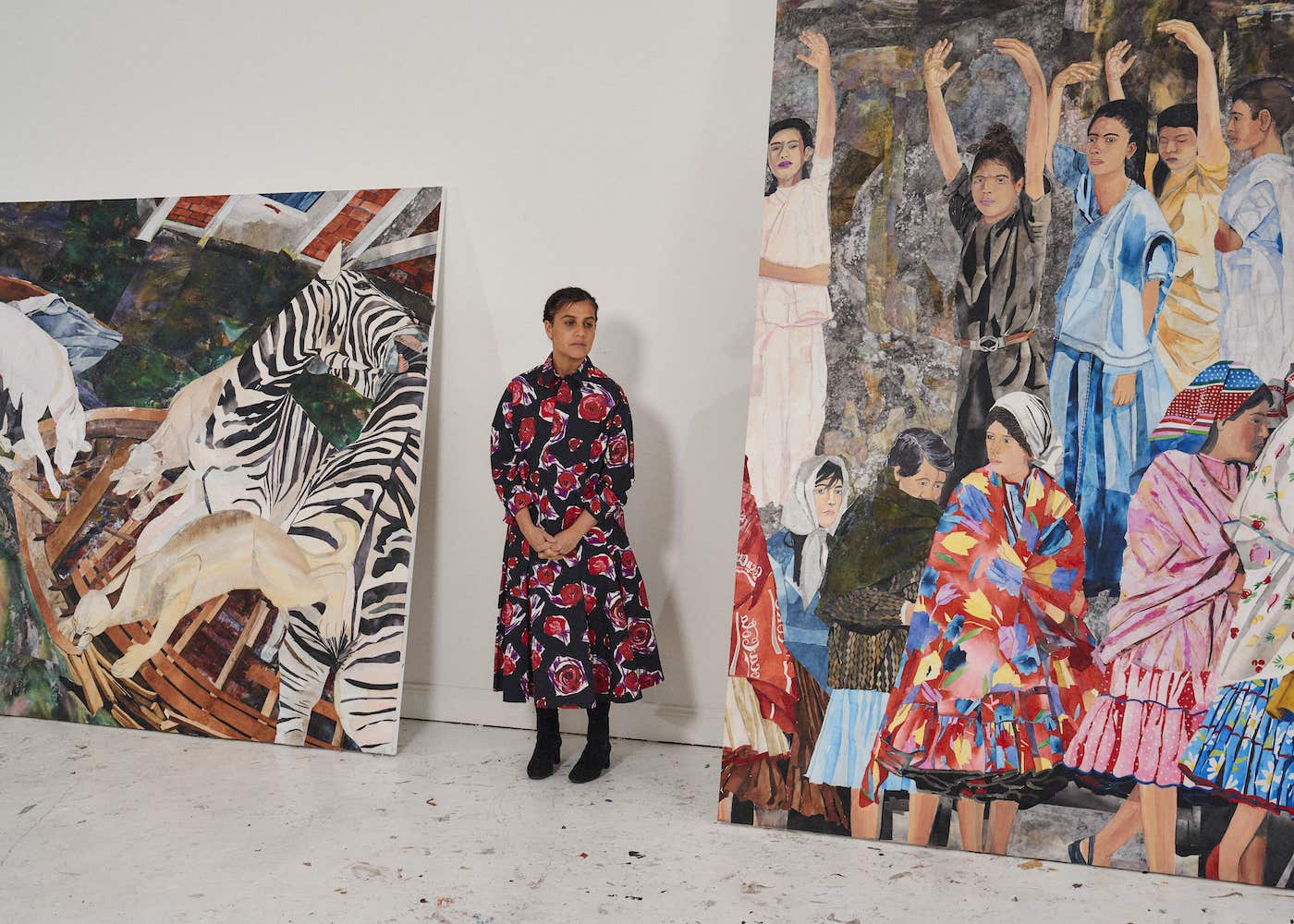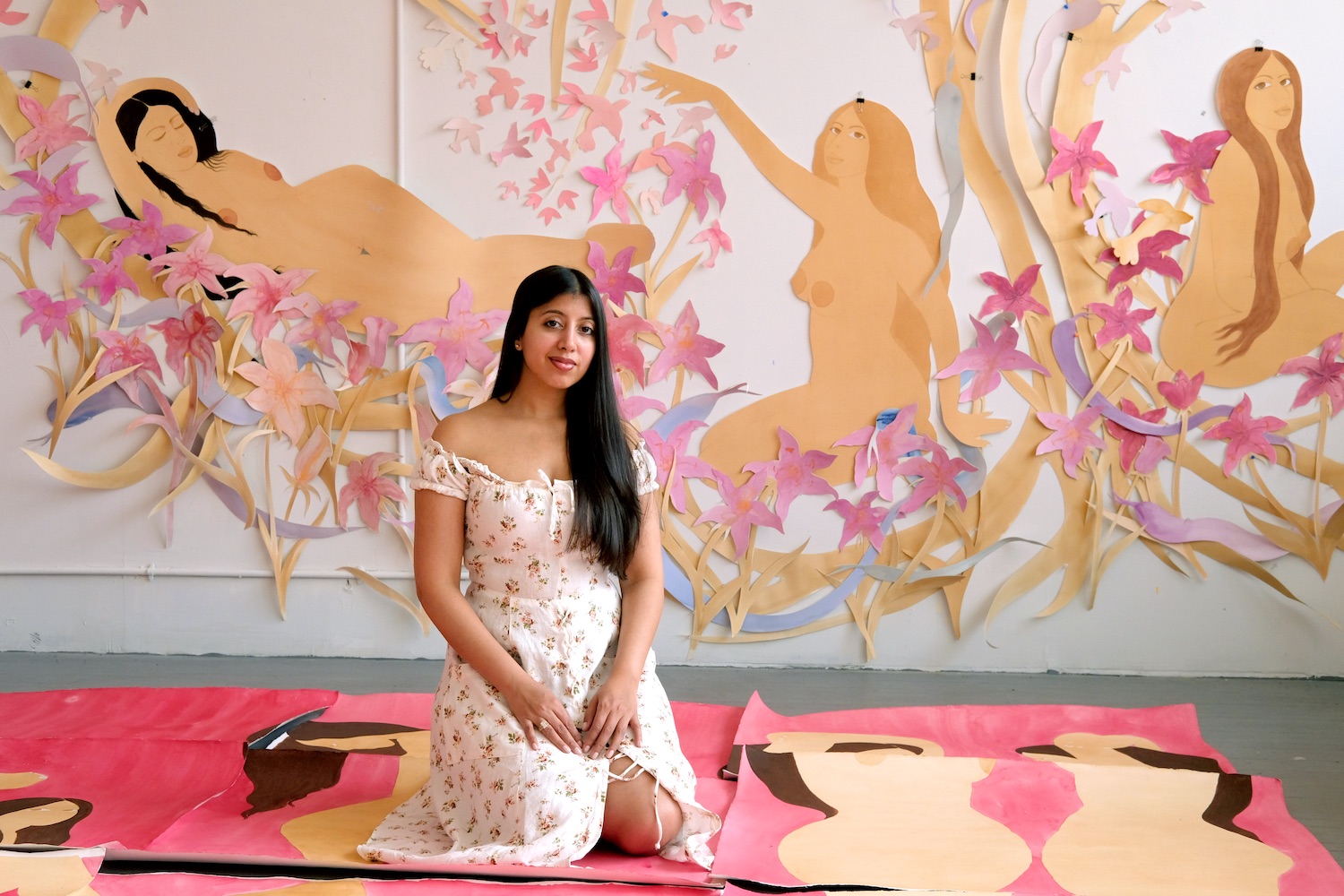How María Berrío’s Paintings Stay True to the Magical Thinking of Hope
The artist María Berrío is showing no signs of slowing down. After her survey at the Norton Museum of Art just a few years ago, Berrío has continued to garner the attention of major museums, galleries, and institutions across the world that have all connected deeply with her singular approach to artmaking and storytelling. Depictions of women, children, animals, and fantastical landscapes are imbued with conflicting dualities, such as nature versus humanity, to form complex visualizations of topics that are both deeply personal and universal. Politically charged, technically and aesthetically mesmerizing, her work is nothing short of ambitious, both in terms of the impressive scale she works in and the conceptual depth of her subjects and the narratives she portrays. Berrío’s unique ability to tell stories through imagery continues to make a remarkable impact on her growing list of supporters.
That cohort of admirers includes the Dallas-based collectors Cindy and Howard Rachofsky, who have chosen Berrío as this year’s artist honoree for their annual TWO X TWO for AIDS and Art contemporary art auction, which benefits the Dallas Museum of Art and amfAR, The Foundation for AIDS Research. Having honored artists including Cecily Brown, Jim Hodges, Rashid Johnson, Alex Katz, Ellsworth Kelly, Yoshitomo Nara, and Jonas Wood, Berrío joins a list of remarkable creators who have participated in this important event, which continues to make an incredible impact in both the field of AIDS research and acquisition funds for the Dallas Museum of Art.
During our conversation with Berrío, we discussed her recent exhibition at the ICA Boston, her process, her ever-changing relationship with New York City, how she knows when a painting is complete, and more.
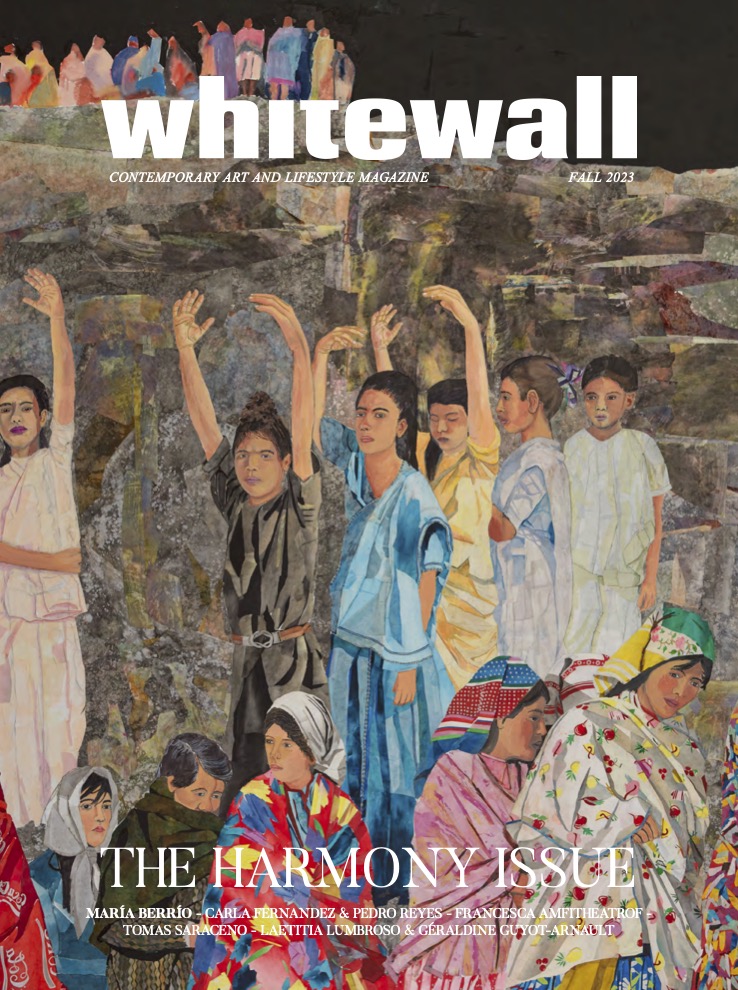
María Berrío, “Las Hijas de la Montaña (Children of the Mountain),” 2023, collage with Japanese papers and watercolor paint on linen, 130 x 80 inches, © María Berrío, photo by Bruce White, courtesy of the artist and Victoria Miro.
WHITEWALL: An incredible solo exhibition was recently up at the ICA Boston. What was the process like of organizing that show?
MARÍA BERRÍO: It was a pleasure working with Ruth Erickson, the chief curator at ICA Boston. From start to finish, it was a smooth process organizing the exhibition.
Making the works was a different story. They emerged from “The Children’s Crusade” series, which blends the history of the 13th-century Children’s Crusade with the current mass migrations of peoples across the Mediterranean and the U.S. border. The main focus and the main characters are children and their perceptions as seen through fantasy and magical thinking. As the children embark on this arduous journey, they infuse the ordinary with the mythic, as their innocent and imagined interpretation of the world bumps against stark realities. The darker and more bleak aspects of these travels are depicted through the naivete, humanity, love, and wonder of a child’s eyes. Sometimes I used my own son as a model, to try and better understand the psychological toll such travels would take. It ended up being a show I am proud of, but one that was grueling and emotional to make.
María Berrío Discusses Works from “The Children’s Crusade” Series
WW: What was it like, or how was the choice made, to work on that scale?
MB: I have always loved making large paintings. There is something about the sheer physicality in creating them that I enjoy. It’s also easier on seeing a life-size figure to enter and live in the world of the paintings. I have been making large-scale works for a while, so this wasn’t so out of the ordinary for me, although there is one piece that was taller than the ceilings of my studio. Painting a slanted canvas, back hunched and arms extended—that was new for me.
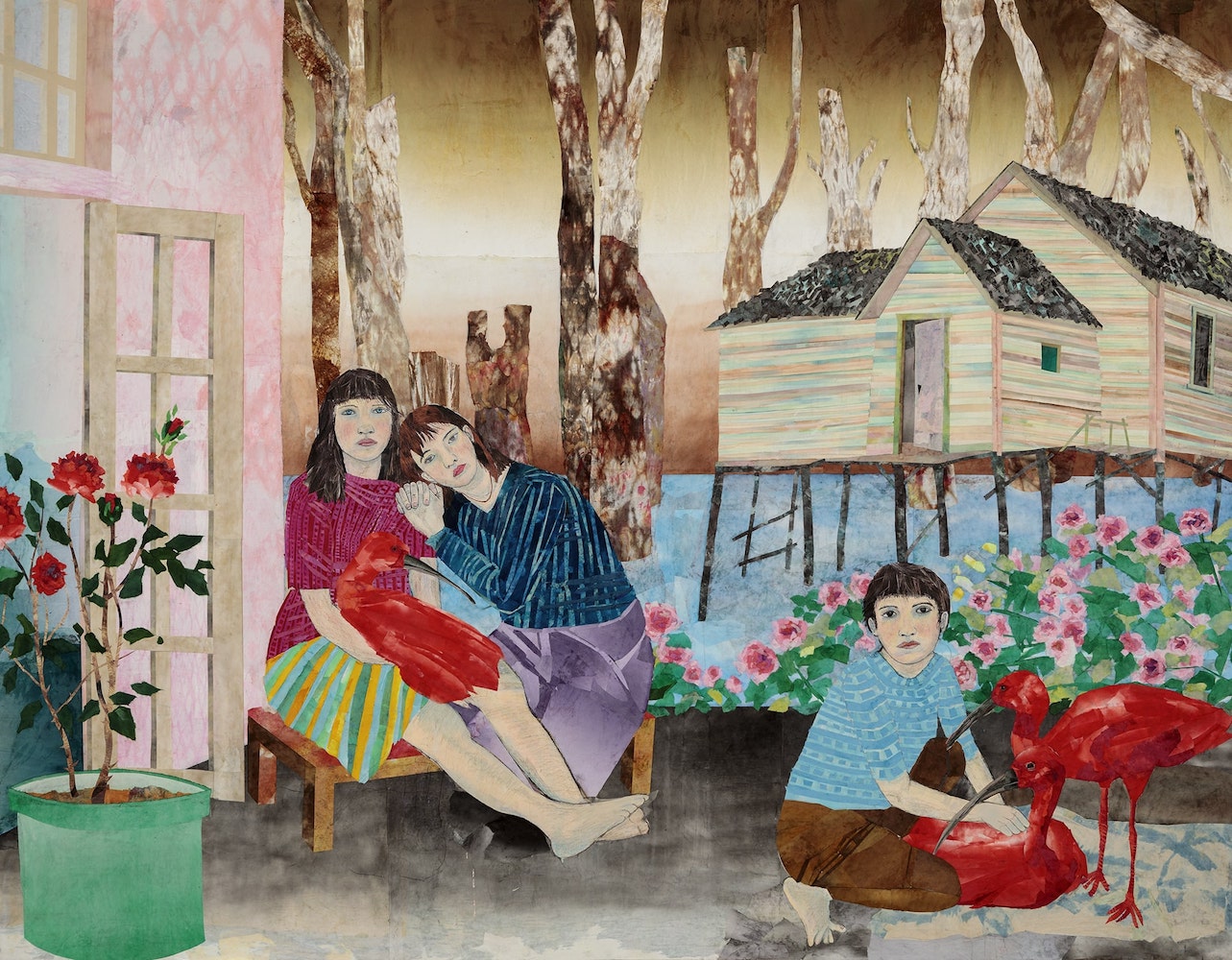
María Berrío, “The Paradise of Others,” 2019, collage with Japanese paper and watercolor paint on canvas, 92 x 118 inches, photo by Jeanette May, © María Berrío, courtesy of the artist and Victoria Miro.
WW: Many of the concepts explored in your work are so timely in how they connect to global issues on migration and borders. How was the response to your work and the show?
MB: The response has been phenomenal. I created a story for the show and each of the paintings, but these are only the interpretations of a single person. Once a piece leaves the studio to be seen in public, the narrative an artist has created becomes just one among many, oftentimes not even the most interesting or important one. I’ve loved to find that the show has inspired people to tell their own stories of migration and sparked some thoughtful conversations, but I’ve been just as pleased to hear some other visitors’ interpretations of the show that are completely different from my original intent. I’ve heard that the show has often compelled visitors to talk with each other and the gallery staff. For me, this is the highest praise I could receive, to learn that my storytelling allows for a space for the stories of others.
I particularly love the way children have responded to it, as it is a show where I imagined seeing through a child’s eyes. They seem adept at finding the ultimately hopeful views I believe are in all of my works, even in many of the darker images.
WW: I am amazed by the ways in which you are able to demonstrate how humanity and nature commingle in such poignant, sensitive ways. It is especially admirable and noticeable at this moment in history, when the political and social divides across party lines have shown how hurtful and harmful humankind can be at times. What drives this continued optimism and openness in your approach to artmaking?
MB: As humans, we tend to lock ourselves in our own worlds, beholden to our own joys and sorrows, ignoring our part in the larger circle of life as if we could remove ourselves from it. By distancing ourselves mentally, technologically, and materially from nature, we not only fail to see nature’s wonder but also our own place in that wonder. We react in shock and horror to discover that we, too, are but one fragment of something far grander than our laughter and sadness.
But being a part of that grandness, even an insignificant sliver of it, is miraculous. Perhaps its very transience is what even makes it meaningful. For when these paintings have crumbled to dust, when our nations and our species themselves have completed their designated passage through the universe, the world will continue to turn, the cycle persisting indomitably. Our place in this wondrous continuum is reason enough for hope.
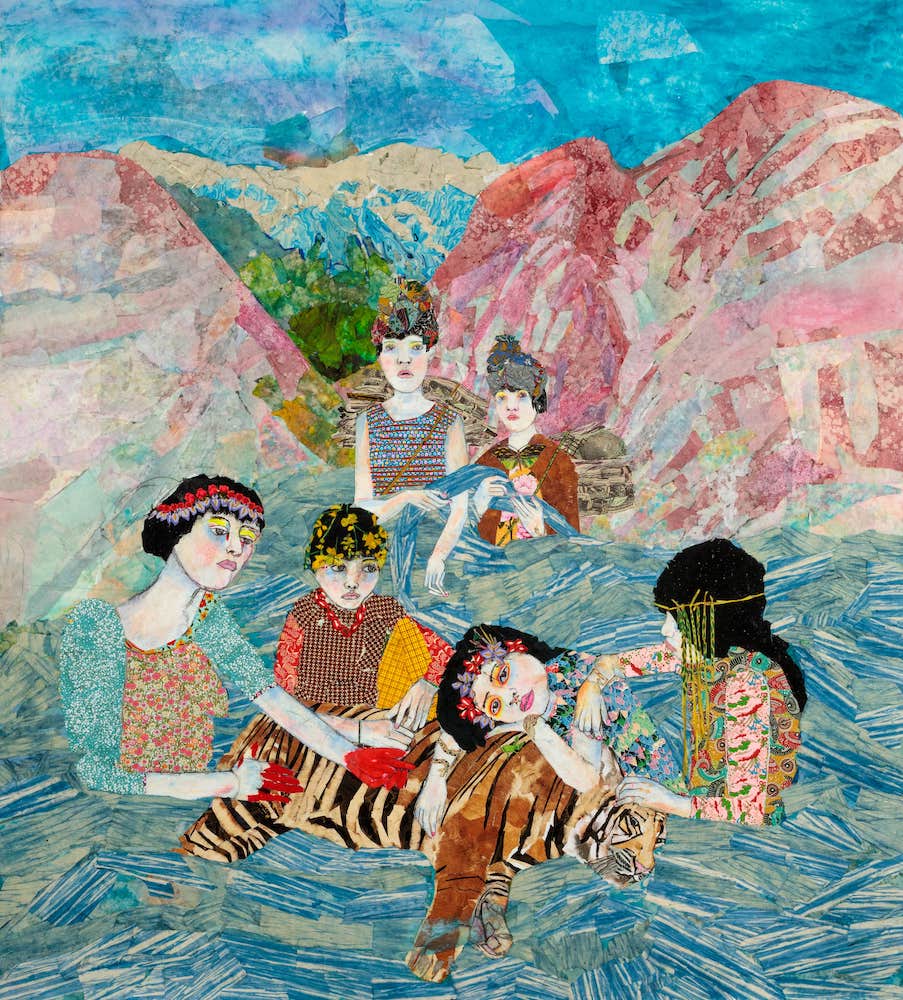
María Berrío, “Aluna,” 2017, collage with Japanese paper and watercolor paint on canvas, 80 x 72 inches, photo by Jeanette May, © María Berrío, courtesy of the artist and Victoria Miro.
“I imagined seeing through a child’s eyes,” — María Berrío.
WW: The term “magical realism” is used fairly casually as a source for inspiration or scene-setting throughout art and culture, but with your work, it feels like an essential component that provides such a depth and specificity to the figures and narratives you create. I’m curious to hear about some of the other non-art influences that permeate your works and process.
MB: Myths, folklore and legends, historical events, poetry, contemporary events: I see no reason to separate these if I’m making a painting. All of these things influence me, so why box them into separate categories? Why not include them all? They may confuse or cancel or contradict each other, but what of it? The things that we claim make us distinctly human—tool use, language, et cetera—are often found in the animal world: Perhaps contradictions alone are what make us human. We are all Walt Whitmans, containing multitudes.
But it might be this mixing that gives my work that sense of “magical realism.” That and maybe my upbringing. As leery as I am with the description, as if Gabriel García Márquez was the final word on my home country, I can’t pretend there aren’t certain aspects of growing up in Colombia that have that feel. Surreal, at least. There are times I’ll recount tales from my childhood, and listeners’ reactions inform me that what I took for granted is, in fact, far removed from the usual experiences of most.
WW: Layering and materiality are such significant components of your process, both in terms of the physicality of your works, but also the conceptual depth you visualize through your compositions. Can you describe your process in starting a new work?
MB: I work with a fabricator in Japan who makes papers and then hand-dyes them, often with flowers. I never tell him what to do. He just sends me all these beautiful hand-dyed papers, beautiful papers which I then proceed to cut and rip into shreds.
While I often have an idea or a sketch before I begin, my process basically starts very abstract, where I just go and start building everything, layer by layer. I’m not locked into my original idea, and the painting and the story it tells can change a great deal during the making. I begin feeling the process, and there is something almost mystical about it, some sort of world that is just created by the materials, which can inform the work as much as I do. It’s a process that has taken more than a decade to develop, and one that I’m still learning about through the act of creating.
WW: On the topic of process, your studio set up and your connection to New York seem particularly important in how they have shaped and evolved your approach to artmaking. What first drew you to the city?
MB: I first came to New York City as a college student, and instantly fell in love with its energy, its cast of fascinating characters, its filth and beauty, its freedoms and limitations. That was 23 years ago. I’ve spent more of my life here than in Colombia.
WW: How has your relationship to and perception of the city changed over time? Has this influenced your approach to your practice?
MB: I suppose my relationship has changed with my life changes, from me being a kid to having one. Both the city and myself have grown and changed over the decades. I can no more return to what the city once was than I can revisit my youth. The city is still as energetic and frenetic as ever, an endless adrenaline rush that perhaps is ultimately unhealthy, but which I find rejuvenating nonetheless. New York City, she still is a source of awe, inspiration, frustration, and humility. But I like to think that she and I have come to an understanding, at least.
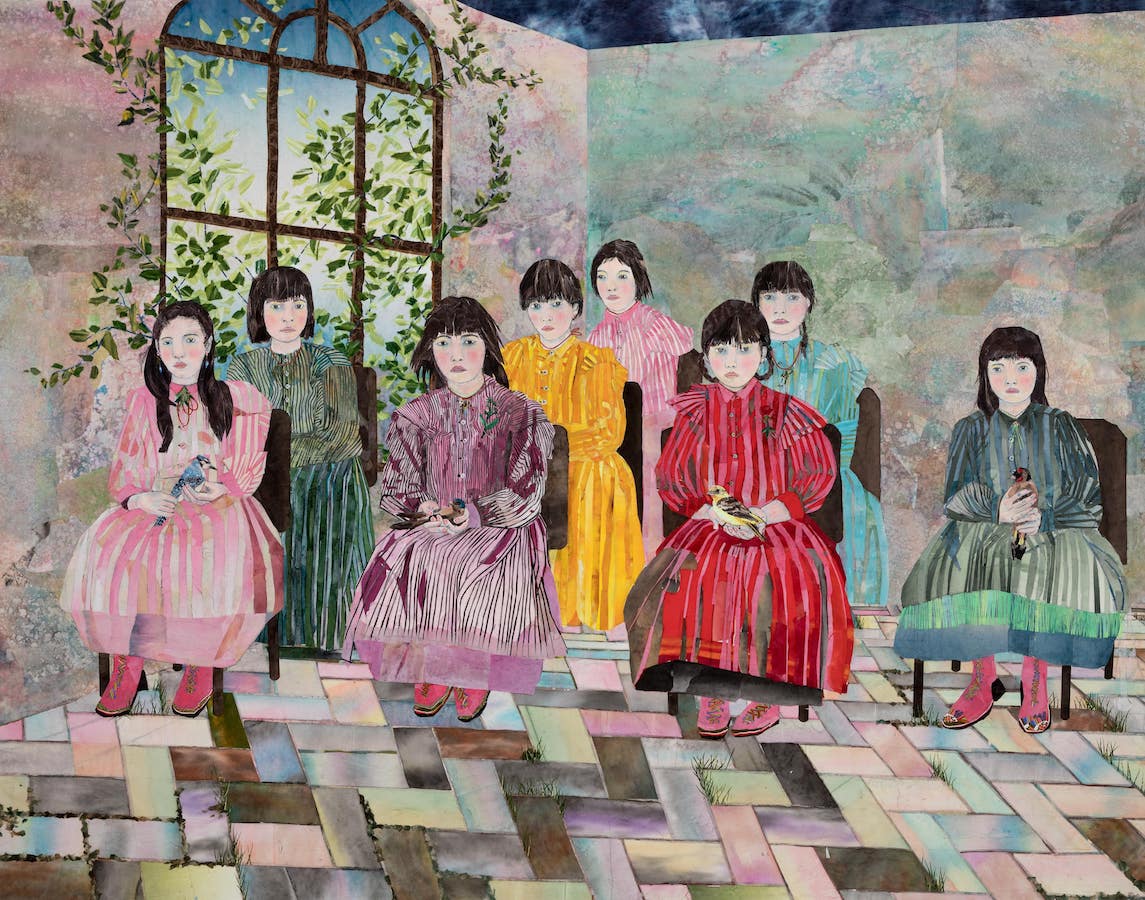
María Berrío, “Oda a la Esperanza (Ode to Hope),” 2019, collage with Japanese paper and watercolor paint on canvas, 92 x 118 inches, © María Berrío, photo by Jeanette May, courtesy of the artist and Victoria Miro.
“Perhaps contradictions alone are what make us human,” — María Berrío
WW: Do you have a typical daily routine in your studio?
MB: Every day changes depending on my mood and the task at hand.
WW: Congratulations on being named the 2023 TWO x TWO for AIDS and Art honoree, which has celebrated such a remarkable mix of artists. How does it feel being part of this cohort and supporting this important organization?
MB: It’s an incredible honor to be among such luminaries, many of whom I’ve admired for so long. I am extremely grateful to Cindy and Howard Rachofsky, whom I’ve known for some time and who have been very supportive of my work.
WW: We always like asking artists how they know when a work is finished. Do you have a hard time feeling done with something, or do you know exactly when you should stop working on it?
MB: I can tell through emotion. I start to feel melancholic as I approach the completion of a work. The exploration, the struggle, the discoveries I’ve made and the intense relationships I’ve forged with the work are all coming to an end. It’s the loneliness of a finished tale. And when they leave the studio, and suddenly I’m staring at bare, scuffed-up walls that reflect more pronounced and sonorous echoes . . . it’s like I was abandoned by my friends.
WW: Are you able to share any information about what you are working on right now, or any upcoming shows we should look out for?
MB: I’m currently completing works for a booth in the upcoming Armory Show with Victoria Miro Gallery. After that, I have a few solo institutional exhibitions on the near horizon. It is an exciting time in my career and one I feel incredibly lucky and grateful for.
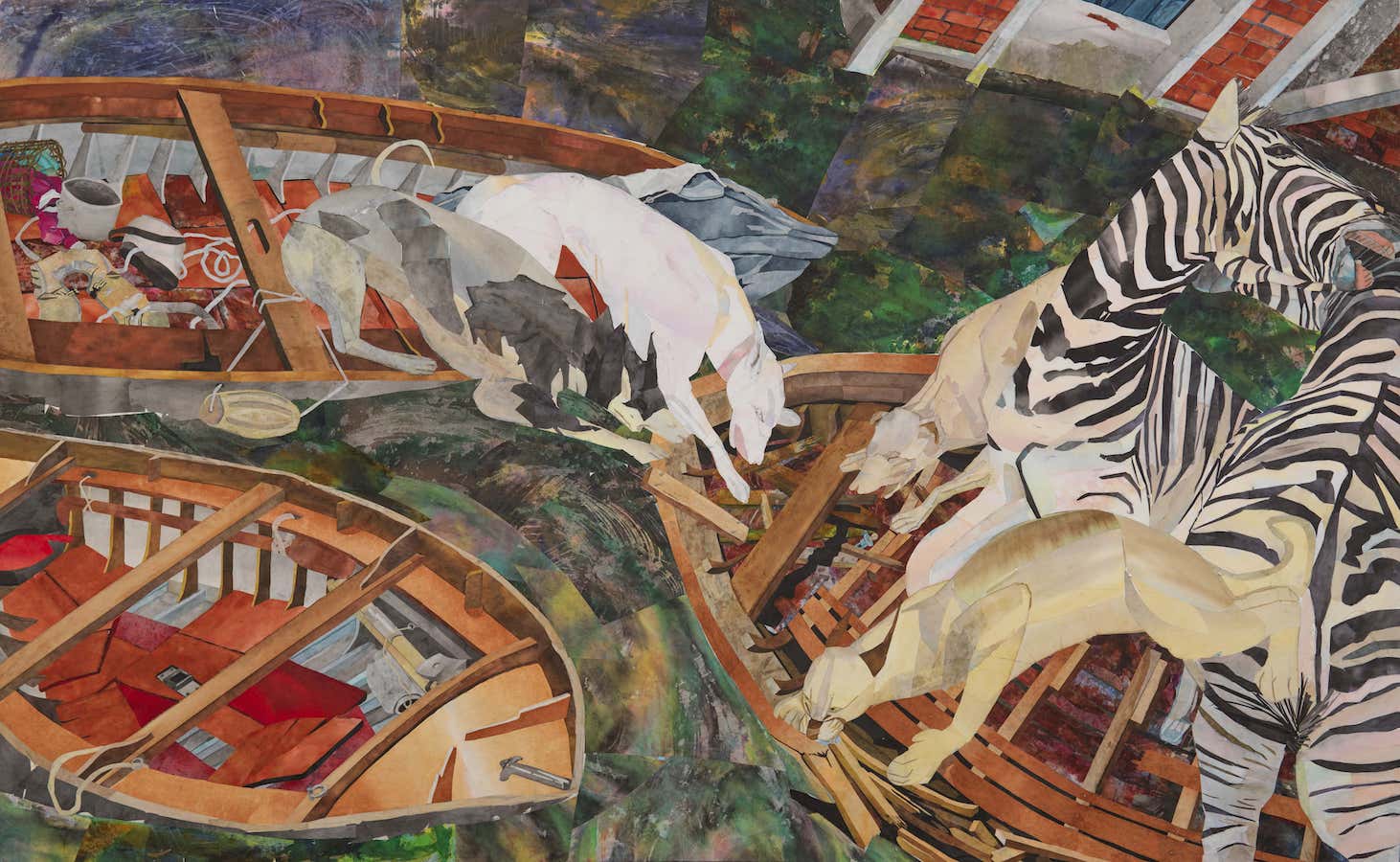
María Berrío, “The Crossing,” 2023, collage with Japanese papers and watercolor paint on linen, 80 x 130 inches, photo by Bruce White, © María Berrío, courtesy of the artist and Victoria Miro.



